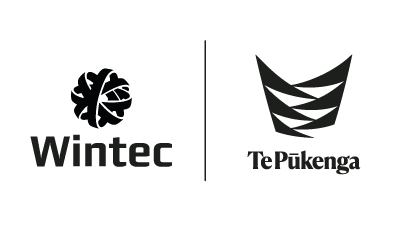CASE STUDY: Reinvigoration of a town centre

Share this step
How might the Thames CBD be reimagined into a safe, inviting and thriving area?
Context: The Thames Coromandel District Council exists to ensure the communities have a good quality of life – both now and in the future. This means that as local authorities they need to identify what their community needs and also demonstrate how to fulfill those needs.
The challenge proposed was How might the Thames CBD be reimagined into a safe, inviting and thriving area. The CBD is perceived as lacking engagement, connection and vibrancy and has been described as uninviting and unsafe which contributes to Thames being known as a “pass through town”.
Six undergraduate students, from Civil Engineering, Information Technology and Social Work combined with four members from the Thames Coromandel District Council to use the Design Thinking process to understand and develop solutions for this challenge.
Empathy:
In the Empathy stage, this group of diverse people used a CREATIVE BRIEF to understand the challenge. The CREATIVE BRIEF is used to create a shared understanding of the project for everyone involved. It helps to create shared outcomes, understanding the context of the challenge and what issues may arise through the challenge. Questions such as “Who else is trying to solve this now” or “Stakeholders to the challenge” are investigated.
Once the creative brief is complete it was time for secondary research. PESTLE is a framework used to investigate key themes. PESTLE is an acronym for Political, Economic, Social, Technology, Legal and Environment. Questions and research is generated to help understand the context of the challenge. The final part of collecting empathy information was through EMPATHATIC INTERVIEWING with stakeholders. Interviews occurred in two different categories: formalised targeted interviews of stakeholders, or informal street interviews with the public.
Define:
The tool AFFINITY MAPPING was used to make sense of the data. This was completed mainly by the students who then invited industry to confirm or refute their findings. AFFINITY MAPPING created insights from secondary and primary data, which were then turned into POINTS OF VIEW, in this case in the form of HOW MIGHT WE QUESTIONS. These POINTS OF VIEW narrow the original question into manageable challenges to solve, based on the needs discovered.
An extract from their report demonstrates a HOW MIGHT WE, some insights and a small summary:
How might we create public spaces that encourage community connection?
- One third of the population of Thames is predominantly elderly.
- The Thames locals want a community that interacts with each other, helps each other out, has a shared vision and a clear sense of direction.
- Thames community groups find it challenging to communicate and work together.
- Events are organised but the groups feel that there are no events that target them.
- Thames has an interesting historic identity and many heritage buildings which people are proud of.
This question identifies that the locals have a need and a want for their own public space to encourage community connection. Many of the interviewees talked about wanting a green space or a public square that they can utilise. They suggested using Thames historic identity when creating these public areas. Interviewees also said this place should be a place where events and activities can be held. A space where everyone can meet and would encourage communication and connection.From the insights, community groups find it hard to communicate and work together. A public space could give community groups a mutual ground to work with, this could be less intimidating for people. A public space is usually suited for a large variety of people, is usually something everyone in the town knows about and knows where it is, somewhere in or around the CBD would be ideal, this is because it is a central place.“Arrange public meetings and invite the Council staff to address people’s problems.”Meetings like this could be held in that public square or space. It will be a place where everyone would know about and it would not seem as intimidating to people.
- Digital Storyboard
- Digital Flyer
- Computer Aided Drawing Mock up
A user testing INTERVIEW SCRIPT was used to gather feedback on the top ideas where there were targeted interviews on stakeholders. Each idea was then measured with a USER FEEDBACK BOARD and a decision was made towards the next steps.
The Little Big Space is a council- run space, centrally located on the main street where the Council, businesses, youth, and community can interact and collaborate for Thames initiatives. This space will encourage innovative thinking for the people of Thames and help people within the community to drive change and better outcomes for the current and future generations of Thames.
The insights that linked our final solution together were:
- People want a shared space for community connection
- Businesses are a major supporter of the community
- Youth want engagement and connection
Share this

Reach your personal and professional goals
Unlock access to hundreds of expert online courses and degrees from top universities and educators to gain accredited qualifications and professional CV-building certificates.
Join over 18 million learners to launch, switch or build upon your career, all at your own pace, across a wide range of topic areas.
Register to receive updates
-
Create an account to receive our newsletter, course recommendations and promotions.
Register for free








